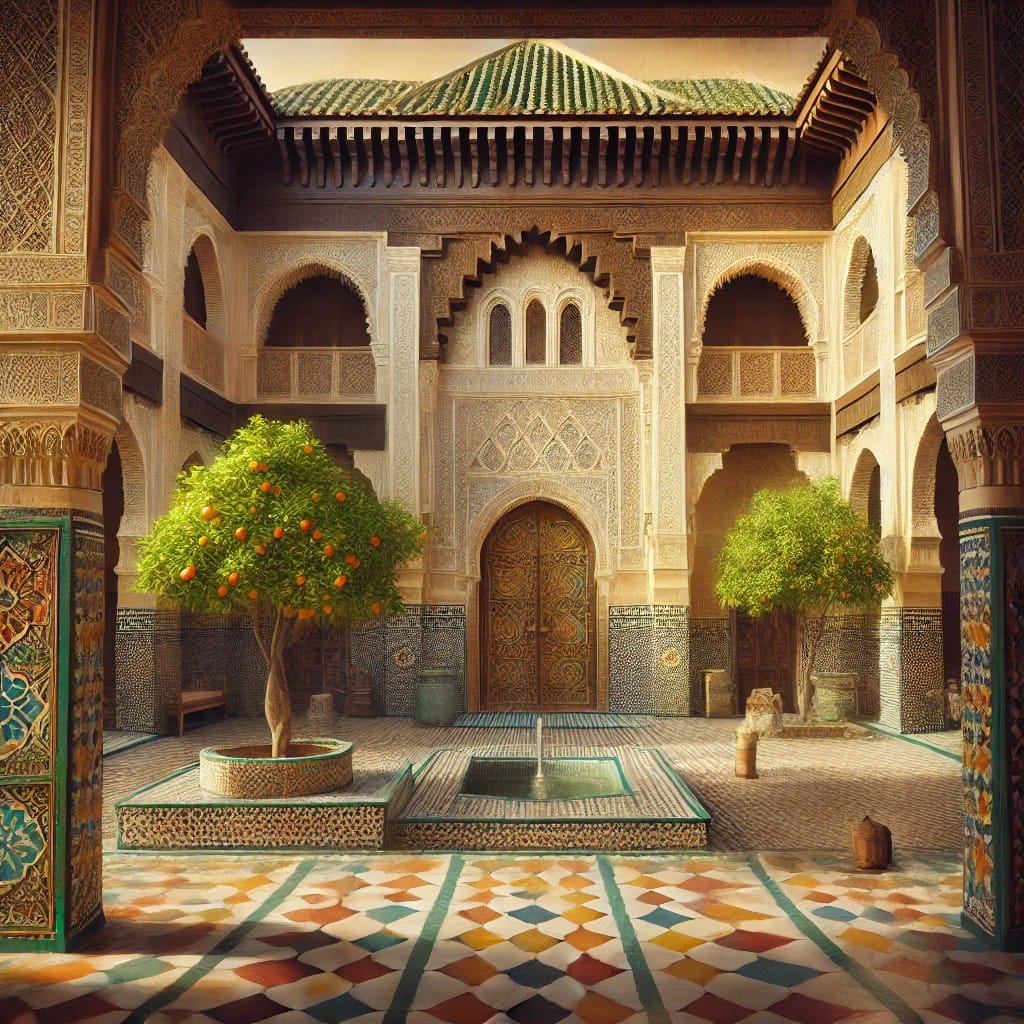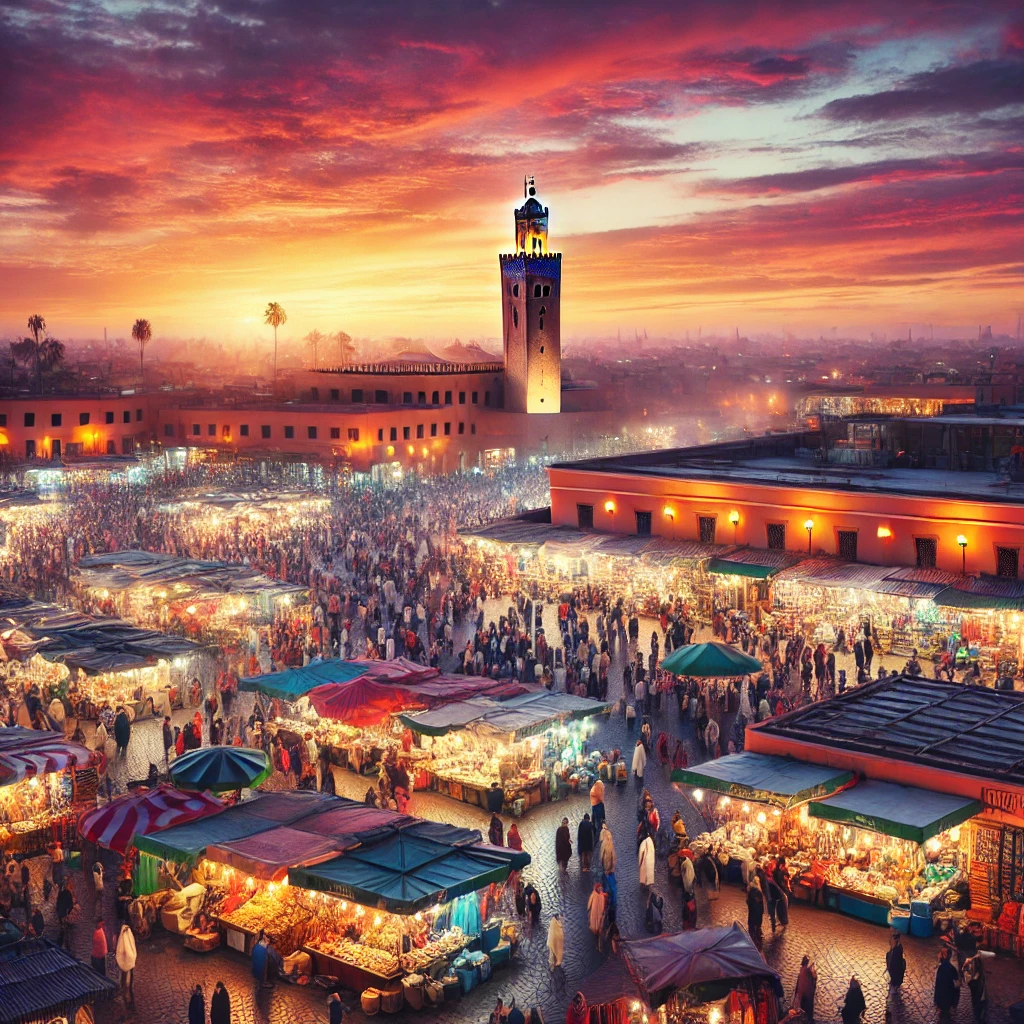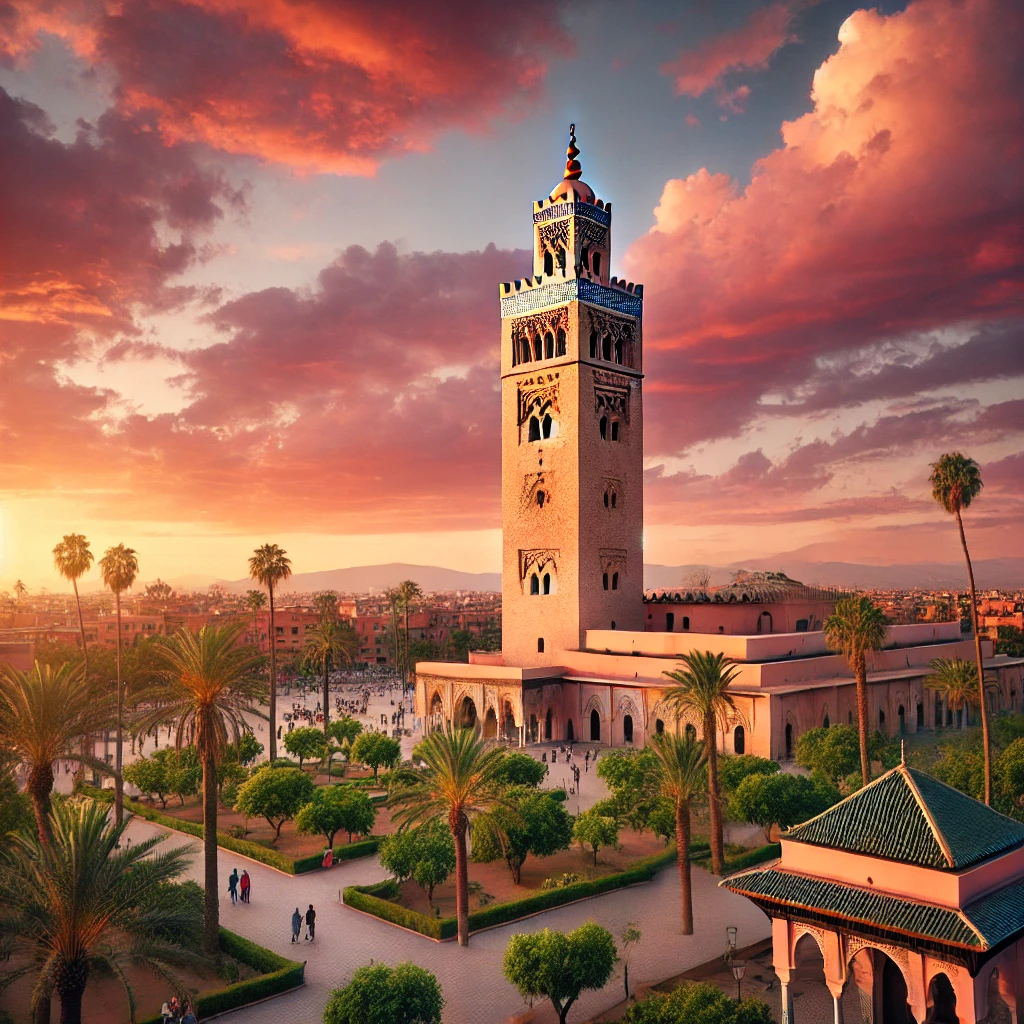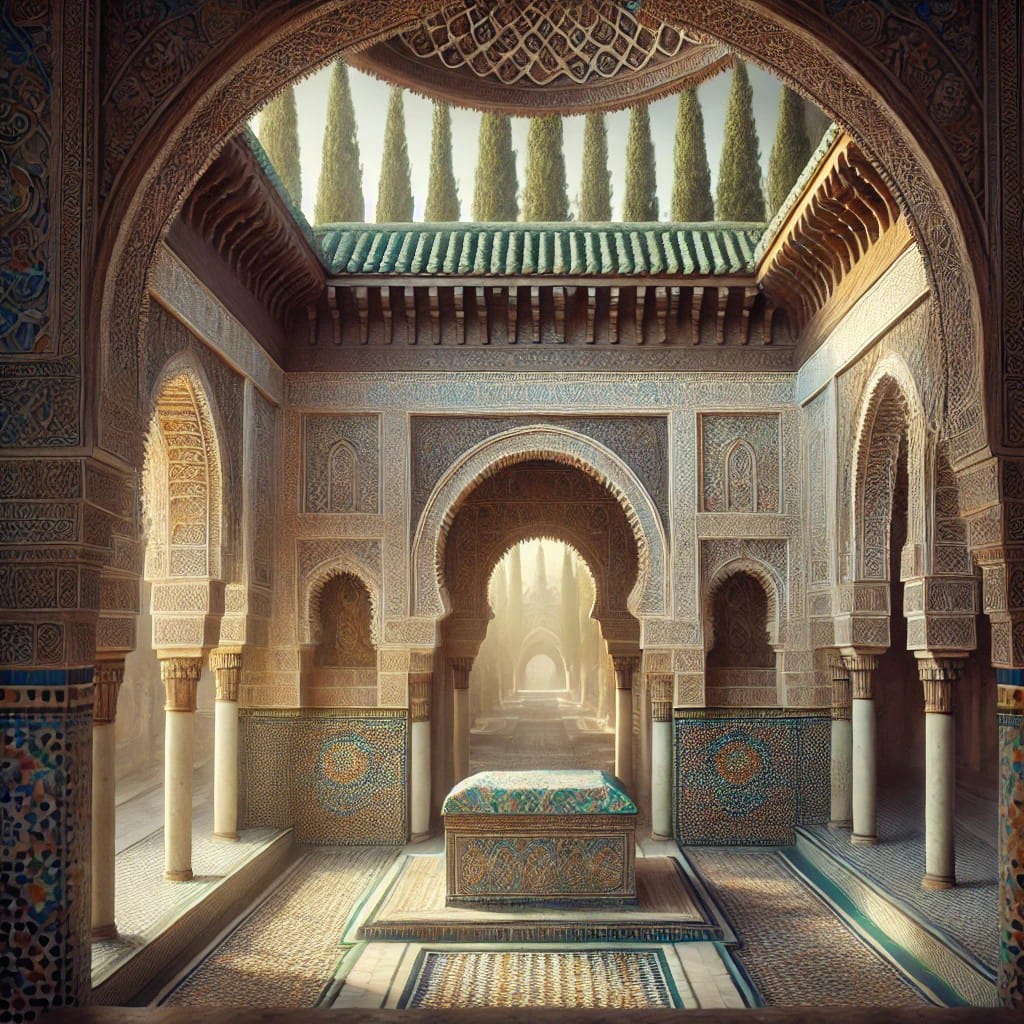Bahia Palace, located in the heart of Marrakech, is one of the city’s most visited and historically significant landmarks. Known for its stunning architecture, intricate tilework, and tranquil gardens, the palace offers visitors a glimpse into the opulent lifestyle of Morocco’s elite in the 19th century. Whether you’re a history enthusiast, an architecture lover, or simply exploring Marrakech, a visit to Bahia Palace is a must.

The History of Bahia Palace
The Bahia Palace was built in the late 19th century by Si Moussa, the Grand Vizier of Sultan Hassan I, and later expanded by his son, Bou Ahmed, another influential figure in Moroccan politics. The name “Bahia” means “brilliance,” reflecting the palace’s intended grandeur. It was designed as a luxurious residence, with over 150 rooms, including reception halls, private quarters, and serene courtyards.
Bou Ahmed’s influence extended beyond the palace, as he was a powerful figure in the royal court, and his home reflected his wealth and power. After his death in 1900, the palace was looted, and it later became a royal residence before opening its doors to the public as a historical monument.
Architectural Masterpiece
One of the key reasons why Bahia Palace is so popular among tourists is its breathtaking Moroccan architecture. The palace showcases a mix of Islamic and Moroccan styles, with beautifully decorated rooms, zellige tilework, and intricate carved wood ceilings. Walking through its grand halls and peaceful courtyards, visitors can admire the craftsmanship that went into every detail of the palace.
Each room features stunning designs with traditional Moroccan patterns, often combining intricate mosaics, stucco carvings, and painted cedarwood. The use of light and space in the palace was carefully planned to create a serene and luxurious atmosphere.
The Beautiful Courtyards and Gardens
Bahia Palace is also famous for its beautiful gardens and courtyards, which offer a peaceful escape from the busy streets of Marrakech. The main courtyard, with its central fountain, is surrounded by arches and columns adorned with colorful tiles. The palace’s gardens, planted with citrus trees, roses, and jasmine, provide a fragrant and relaxing setting for visitors to explore.
These outdoor spaces were designed to be havens of tranquility, where the palace’s residents could enjoy the fresh air and beauty of nature without leaving the safety and privacy of their home.
Why Visit Bahia Palace?
- Stunning Architecture: Bahia Palace is a masterpiece of Moroccan design, with every room showcasing the beauty of traditional craftsmanship.
- Rich History: As a former home to Morocco’s elite, the palace offers a fascinating insight into the country’s royal and political history.
- Serene Gardens: The tranquil courtyards and lush gardens provide a peaceful retreat for visitors looking to escape the hustle of the city.
- Perfect for Photography: The intricate details, vibrant tiles, and elegant courtyards make Bahia Palace a photographer’s dream.
- Cultural Experience: Visiting Bahia Palace allows you to immerse yourself in Moroccan culture and history, making it a highlight of any trip to Marrakech.
Key Information for Visitors
- Location: Bahia Palace is located in the medina of Marrakech, close to other popular attractions like the Jemaa el-Fnaa square and the Saadian Tombs.
- Opening Hours: The palace is open daily, usually from 9:00 AM to 5:00 PM. It’s best to check local listings for any updates.
- Entry Fee: There is an entrance fee to visit the palace, typically around 70 MAD.
- Best Time to Visit: To avoid large crowds, it’s recommended to visit early in the morning or later in the afternoon.
Tips for Visiting Bahia Palace
- Arrive Early: Bahia Palace is one of Marrakech’s most popular tourist spots, so arriving early will give you the chance to explore without large crowds.
- Take Your Time: With so much detail to appreciate in the architecture and gardens, take your time walking through the palace to fully absorb its beauty.
- Combine with Other Attractions: Since Bahia Palace is located in the medina, you can easily combine your visit with other nearby attractions, such as the El Badi Palace, Dar Si Said Museum, or the Mellah (Jewish Quarter).
- Hire a Guide: To gain a deeper understanding of the palace’s history and significance, consider hiring a local guide to provide insight into its background.
Conclusion
Bahia Palace is a testament to the grandeur of Morocco’s architectural heritage and a reflection of the country’s rich cultural history. Whether you’re exploring its exquisite rooms, admiring the detailed tilework, or relaxing in the lush gardens, Bahia Palace offers an unforgettable experience for visitors. When planning your trip to Marrakech, be sure to include this stunning palace in your itinerary for a deeper connection with Moroccan art, history, and culture.



